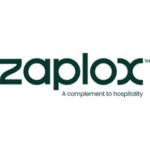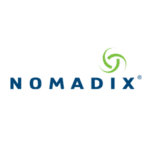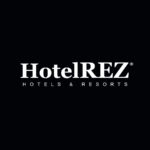 It’s not a revelation, but a hotel cannot thrive—or survive—without a sufficient stream of guests coming through their doors. While operators will likely find success increasing their hotel’s occupancy rate by cutting prices, engaging in a “race to the bottom” with your competitors in pricing is not advisable for reputational and long-term financial health.
It’s not a revelation, but a hotel cannot thrive—or survive—without a sufficient stream of guests coming through their doors. While operators will likely find success increasing their hotel’s occupancy rate by cutting prices, engaging in a “race to the bottom” with your competitors in pricing is not advisable for reputational and long-term financial health.
Fortunately, price isn’t the only tool available to hoteliers looking to improve their occupancy rate. Below, we’ll highlight how to increase hotel occupancy with some tried-and-true approaches and introduce some important considerations to keep in mind when monitoring this common hotel performance metric.
Hotel occupancy: The basics & important considerations
Before we get tactical, we have some basic foundation to lay for anyone not yet up-to-speed. Hotel occupancy is a simple but important measure of how “full” a property is. Hotel occupancy rate is calculated by taking the total number of rooms occupied and dividing it by the total number of rooms available (if you wish to express this as a percentage, multiply this figure by 100).
While occupancy has a direct connection to revenue performance, this is a metric that requires context—like revenue generated, or better yet, profit generated from this level of occupancy—to effectively evaluate your hotel’s overall performance.
Breaking occupancy down by room type is another helpful approach for operators seeking to gather useful insight from this metric. For example, if your standard “entry-level” rooms are consistently packed while occupancy for deluxe room types lags far behind, that may suggest there’s an upselling opportunity to offer standard room guests a discounted upgrade—driving additional revenue through filling a previously unoccupied room and opening up a higher-demand room for booking. While this is a relatively simple example, these types of tactical changes can be easily automated with modern revenue management tools like G3 Revenue Management System.
How to increase hotel occupancy: 9 Tried and true approaches to consider
The nature of today’s hospitality landscape means guests are often spoiled for choice and the supply of places to potentially stay is increasingly abundant. To grow or maintain occupancy rates hoteliers must be willing to innovate, experiment and adapt.
While there’s no simple, universally effective solution for increasing hotel occupancy, the following prove effective in the right circumstances.
1. Consider your other channels for promotions
Don’t limit promotions to your brand website. Explore channels like the Global Distribution System (GDS), consortia, and work with corporate accounts’ administrative staff. Leverage the “Billboard Effect” and collaborate with online travel agencies (OTAs) to increase visibility and drive bookings. Build relationships with local businesses, such as tour desks, event organizers and attractions, to create mutually beneficial partnerships that will help grow your occupancy.
2. Develop targeted, relevant packages
To increase occupancy, try creating tailored packages for your target audience. Consider creating themed packages based on local events or attractions, such as wine tasting or museum tours, or offering gas/petrol vouchers for weekend staycations for guests who live in neighboring districts or states. Monitor the performance of your packages and adjust them as needed to maximize their appeal.
3. Leverage social media to drive FOMO (fear of missing out)
Fear of missing out on the fun is a strong driver for change, and social media provides an excellent medium for tapping into this. Harness the power of social media to create a sense of urgency and desire for your hotel. Share photos, stories, and promotions that highlight unique aspects of your property, local events, and guest experiences. Engage with your audience through comments, questions, and contests to build a loyal following and generate interest in your hotel.
4. Revenue manage instead of yield manage
While it’s easy to sometimes get locked in on trying to yield additional revenue during a high-demand night, it can pay off to take a step back and consider the impact this has on larger revenue and occupancy picture for the surrounding days.
Instead, focus on revenue management over yield management, which means capitalizing on peak night demand to drive occupancy on the adjacent shoulder nights. This might involve sacrificing some average daily rate (ADR) on the peak night but gaining longer-stay bookings that improve occupancy and can ultimately have higher revenue value overall.
5. Grow direct bookings
This is a strategy that provides an immediate term occupancy lift through the use of exclusive benefits like discounted rates, complimentary amenities and loyalty program perks for direct booking channels. While this approach does typically require some incentivization, the effort can pay off long term as well-designed direct booking promotions can encourage loyalty program participation (and the data collection benefits that come with) while cutting down on commission costs from online travel agencies.
6. Personalize guest experiences
Provide personalized experiences for your guests by leveraging data from previous stays, preferences, and feedback. Tailored services and amenities can make guests feel valued and more likely to return—and more likely to recommend to others, boosting occupancy in the long run.
7. Implement a dynamic pricing strategy
Adopt a dynamic pricing strategy that adjusts room rates in real-time based on factors such as demand, competitor pricing, and market conditions. This approach helps maximize revenue and occupancy by ensuring that your hotel remains competitive and attractive to potential guests. Apply this to dynamic to discounting too. Discount the minimal amount necessary to capture the most bookings and avoid leaving money on the table.
8. Utilize and encourage guest reviews and testimonials
It’s a simple truth, but many guests tend to tune out what a hotel has to say about itself—particularly for subjective features. Most seek out external validation in the form of reviews and testimonials to get a true sense of what to expect.
Fortunately, you can use this tendency to your advantage in a long-term effort to increase occupancy. Encourage satisfied guests to leave reviews on popular review platforms such as TripAdvisor and Google Reviews. Positive reviews can significantly impact potential guests’ decision-making process, leading to increased booking conversion. Even less-than-ideal reviews have a silver lining, as addressing any negative feedback promptly, sincerely, and professionally demonstrates your property’s commitment to guest satisfaction.
9. Compete at the room type level
Growing market share is not limited to competing your lead-in room type against your primary competitor’s lead-in room type. Consider leveraging your premium rooms to compete against higher-rated luxury competitor’s lead-in room types. For instance, many guests would consider a 4-star hotel club room with club benefits that’s priced similar to a 5-star hotel’s basic room.
Thinking beyond increasing hotel occupancy rates
By implementing these strategies, hoteliers can increase or maintain occupancy rates even in the face of changing conditions. Adapting to the evolving travel landscape and the needs of your guests will help ensure your hotel’s long-term success.
Of course, occupancy only tells part of the story. Revenue management is ultimately about selling the right product, to the right customer, at the right time, with the right pricing, and through the right channel.
And with the right system guiding these efforts, you can start doing more with less, including increasing your hotel’s occupancy rate while saving time, enhancing productivity and much, much more.



















